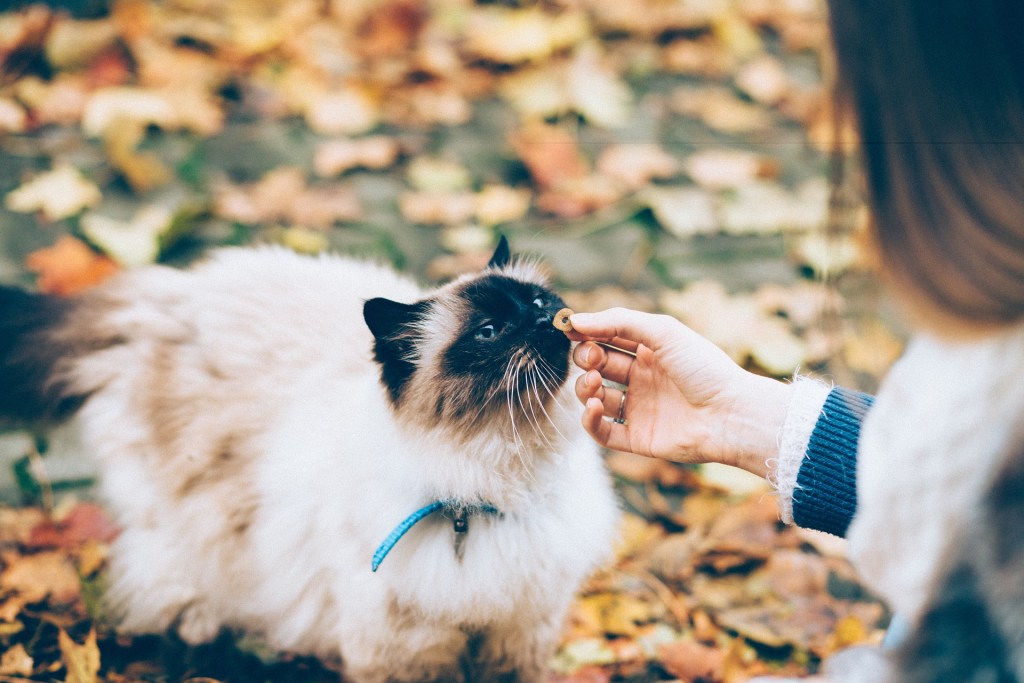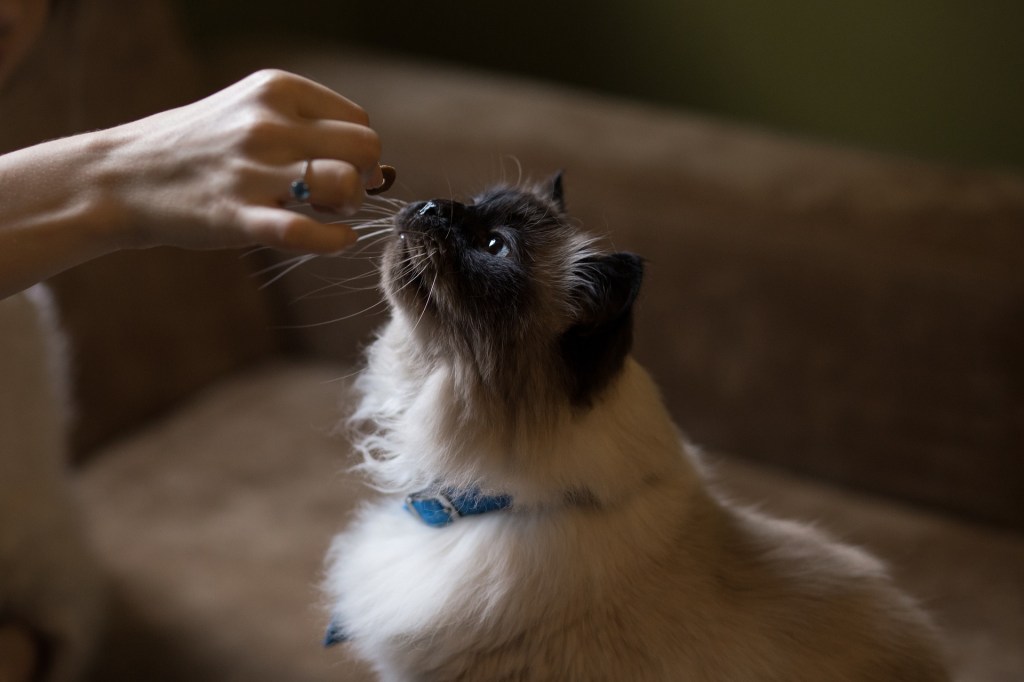If your cat is on a grain-free diet, then you can’t feed him many of the commercially available treats that you’d find at pet stores. Most of those treats contain grain, so it’s important to choose only grain-free cat treats to stick with your cat’s diet. While there are many grain-free treat options available to buy, you can make these treats, too. These grain-free, homemade cat treats are plenty tasty, and since you make them yourself, you’ll know for sure that they’re free of any ingredients that might harm your cat’s health. All you need is a good recipe and a little time — and we’ve included everything you need below.

Great homemade grain-free cat treats
If you want to give your cat a tasty, healthy treat that’s free of grain, then this grain-free cat treats recipe is a great place to start. The recipe takes just 15 minutes to prepare and then 12 minutes to cook, so your cat will be feasting on tasty treats in no time.
You’ll need some basic equipment, including a food processor and an oven. The preparation is pretty basic and requires only equipment that you’ll find in just about any kitchen.
The basis of this recipe is tuna and cooked pumpkin. Tuna is full of protein, and it’s a healthy choice for most cats. Cooked pumpkin is rich in fiber, which can help relieve both constipation and diarrhea. Pumpkin also has plenty of other nutrients that are valuable for cats.
In addition to those main ingredients, the recipe includes egg yolks and coconut flour.
You’ll notice that this recipe includes sea meal mineral powder. That powder is rich in nutrients, but it isn’t a requirement for this recipe. In fact, you can substitute more common ingredients like parsley for the mineral powder, and the treats will be just as tasty.
Preparing these treats is as simple as mixing everything together, rolling out the dough, and cutting out little treats. Be sure you choose a treat size that is small enough for your cat to easily chew it. Smaller treats will also bake faster, saving you time.
Why grain-free treats matter
If your cat is on a grain-free diet for health reasons, then it’s important not to accidentally introduce grains through his cat treats. If your cat has a sensitivity to grains, then your vet might recommend a grain-free diet. In some cases, grains like corn, rice, and wheat could cause allergies, skin issues, and even digestive upset.
If your cat’s health issues are because of a grain allergy, then you may see his health significantly improve when you transition him onto a grain-free diet. Coat and skin issues may gradually resolve themselves, and your cat may experience less digestive upset.

Choosing the diet that’s right for your cat
Grain-free diets aren’t right for all cats. They can be high in calories, and some may be difficult to digest. Before you decide that your cat needs to go grain-free, talk with your vet. The issues that you might be interpreting as food allergies could have other causes, like fleabites and gastrointestinal conditions.
If you suspect your cat needs a diet change, start with a vet appointment so you can have your cat’s health evaluated. Your vet will consider factors like the problems your cat is experiencing, his weight, and his overall health. Then, your vet can recommend a diet that’s appropriate for your cat. That might be a grain-free diet, or your vet might suggest a restricted-ingredient diet.
What you feed your cat plays an important role in his health. Feeding your cat the best-quality food that you can afford may help reduce or even avoid some health issues. Some cats tolerate different brands or even different flavors of food better than others. Once you find a food that works well for your cat, try to keep him on it long term, unless your vet recommends a change. If you’re feeding a grain-free diet, you’ll need to make sure that you don’t inadvertently introduce grains to your cat through his treats or other snacks. This can be a bit of a challenge in the beginning, but as you get familiar with the products available and even start to make your own cat treats, it gets easier.
Editors' Recommendations
- Wondering why cats chirp? Fascinating reasons why your cat chirps at birds (and you)
- How to cat-proof your balcony before the unthinkable happens
- There’s a totally normal reason cats throw up after eating grass – here’s why
- When can kittens leave their mom? Don’t separate them too early
- Your cat trilling is actually a good thing – here’s why



